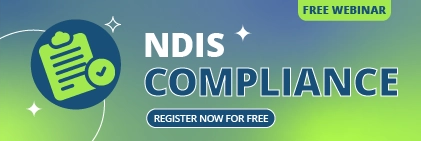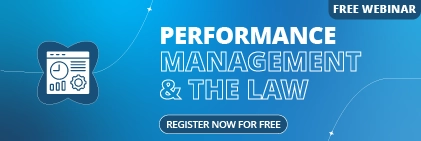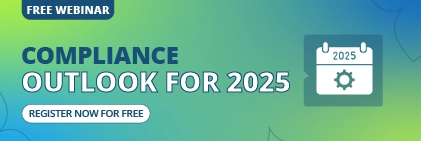You start your day thinking about rostering, payroll, leave, training and suddenly the looming shadow of compliance issues sneaks in.
What if I told you that workforce management software (WFM) can help you handle more than just shifts and hours?
It can be your frontline defence against risk and regulatory breakdowns.
Nowadays, the rules keep changing – privacy laws, labour regulations, safety standards, multiple jurisdictions. If you’re managing a team, you already know how easy it is for paperwork, spreadsheets, and manual checks to slip.
A single oversight could result in fines, reputational damage, or even worse consequences.
That’s why more businesses are turning to workforce management solutions.
In this post, I’ll walk you through five ways WFM software can directly support compliance and risk management.
What is Workforce Management (WFM) Software?
WFM software is a system designed to handle operational workforce tasks, including time and attendance, scheduling, shift management, leave requests, performance tracking, and sometimes integration with payroll and HR systems.
What makes it stand apart is the automation it offers. Instead of relying on manual timesheets, email back-and-forth, and error-prone spreadsheet checks, the software gives you real-time data, validation rules, alerts, and dashboards.
It also differs from a pure HRIS: while HRIS systems might focus on recruitment, benefits, and employee records, WFM is more about the day-to-day management of labour: ensuring shifts align, hours are tracked, overtime is legal, and compliance rules are being followed.
When it works right, your departments—HR, operations, finance, and compliance— are all looking at the same data. No conflicting spreadsheets. Lower risk. Better decisions.
Ensuring Labour Law & Regulatory Compliance
This is one of the most powerful compliance benefits of WFM software. Labour laws, awards, shift rules, and overtime rates – these can vary by region, contract, and role. Managing them manually is a full-time job in itself.
With WFM software, you can:
- Automate time & attendance so overtime, breaks, and maximum shift durations are automatically checked.
- Configure rules per jurisdiction, state, or enterprise agreement (EA), so the system knows which laws apply in each location.
- Issue alerts when a shift or schedule breaches a rule (for example, exceeding consecutive hours, insufficient rest, or overtime).
- Maintain a detailed audit trail of who worked on what, when, and who approved the changes.
- Push updates when labour laws change, so your system is always aligned with current regulations.
Let’s compare:
| Task | Manual Process | With WFM Software |
|---|---|---|
| Checking overtime breaches | HR or the manager must scan timesheets manually | System flags rule breaches automatically |
| Keeping shifts legal per contract | Manager memorises or references documents | Software enforces shift rules |
| Multi-location compliance | Separate spreadsheets, high error risk | Centralised rules apply to all locations |
| Audit record keeping | Scattered files, missing sign-offs | Built-in logs, version history, traceability |
Imagine receiving a surprise audit: your system can immediately generate records showing every shift change, every rule check, and who approved what. That kind of responsiveness drastically cuts risk.
By automating your labour law compliance, you free up your team to focus on strategy, not policing. You reduce penalties, grievances, and the stress of “did we miss something?”
Enhancing Data Security & Privacy Management
Your data is one of your most significant liabilities.
Names, bank details, timesheet records, and performance notes are all sensitive.
Mishandling them can lead to serious legal trouble, especially under privacy laws.
With a robust WFM system, you get:
- Encryption in transit and at rest, protecting data from external breach.
- Role-based access control: you decide who sees what – managers, HR, payroll, or just the individual.
- Audit logs: Every access, edit, or download is recorded with a timestamp and the user’s identity.
- Secure cloud storage with backups and data recovery.
- Compliance with standards like SOC 2 or ISO 27001 (where vendors offer them).
When you centralise workforce data in a single system with good security, you reduce the risk of data leakage, accidental exposures, and internal misuse.
Ask yourself: who in your organisation can access payroll or attendance data today? If there’s no easy way to see or restrict that, you’re exposed.
A good WFM tool gives you visibility and control.
Minimising Payroll & Timekeeping Errors
Payroll mistakes are costly – not just financially, but also in terms of trust.
Incorrect pay, misreported hours, overtime miscalculations – they all open your business to disputes or fines.
Here’s how WFM software helps:
- Precise time capture (punch in/out, mobile clocking, automated validation).
- Break rules and rounding logic are enforced automatically.
- Integration with payroll systems ensures data flows cleanly, reducing manual re-entry and mistakes.
- Days, extra pay, shift differentials, overtime, all handled according to rules you define.
- Transparency: Employees can view their hours, query discrepancies, and management can see exceptions immediately.
Because everything is tracked and flagged, you catch anomalies early—before payroll is processed. This means fewer adjustments, fewer complaints, and more accurate payments from day one.
Imagine this scenario: A healthcare provider discovered, during a retrospective audit, that several nurses had unapproved overtime. The manual process had missed them. After implementing automated time validation via WFM, those discrepancies vanished, and the risk of back pay claims dropped significantly.
Managing Workforce Certifications & Training Compliance
In many industries, employees must maintain certifications (e.g. safety training, licences, regulatory training).
Missing one expiry or forgetting a refresher course can lead to noncompliance, legal exposure, or safety incidents.
With WFM software, you can:
- Store all certification, qualification, and license data in one central place.
- Set alerts and reminders for upcoming expiries.
- Link training requirements to roles (for instance, every forklift driver must renew annually).
- Integrate or communicate with Learning Management Systems (LMS) for tracking course completion.
- Produce reports showing who is qualified and who is due for refreshers.
No more scattered spreadsheets or forgetting a renewal in the rush of day-to-day operations. The system reminds you and your employees in advance.
For instance, in construction or healthcare settings, no unqualified person must be assigned to a task. WFM compliance tracking ensures that it syncs role assignments with qualification validity.
Supporting Risk Forecasting & Audit Readiness
You no longer have to wait for trouble to appear. WFM software provides predictive insights and visibility into audits.
Here’s what it enables:
- Compliance dashboards showing key metrics (overtime breaches, shift violations, upcoming certification expiries).
- Predictive analytics that flag trends (for example, which teams repeatedly push rules or where overtime is rising).
- “What-if” simulations: see how changing schedules or rules might affect compliance.
- Instant audit-ready reports: pull shift histories, change logs, rule violations, and approval paths.
- Alerts when certain thresholds are breached, enabling proactive intervention.
Imagine that your next audit arrives, and you can export a compliance report that shows all relevant data. No scrambling. No missing files. No stress.
Better yet, because you’re seeing trends, you can act early by adjusting staffing, changing shift policies, or rebalancing workloads to reduce risk before it becomes a problem.
Conclusion
You’ve seen how workforce management software can be far more than a scheduling or hours tool. It’s your compliance guardrail.
When your compliance framework is embedded in daily operations, the risk of slips or surprise liabilities diminishes.
That means more time for you to focus on growth, culture, and performance.
If you’re seeking a partner to bring these capabilities into your business, consider Sentrient. Sentrient offers a unified platform combining workforce management, compliance, and risk oversight.
It helps you automate training, policy sign-offs, audit reporting, and governance—all from a single location.
It’s built with compliance in mind, integrates with payroll systems like Xero and MYOB, and gives you dashboards for real-time visibility.
Book a demo with Sentrient today and see how its features can protect your business from risk, streamline operations, and bring peace of mind.
FAQs
1. What is Workforce Management (WFM) Software, and how does it improve compliance?
WGM Software is a digital tool that helps you manage scheduling, time tracking, leave, payroll integration, and compliance rules in one place. It improves compliance by automating checks against labour laws, creating accurate records, and reducing human error. Essentially, it ensures that your people, processes, and paperwork remain aligned with legal and organisational standards.
2. How does WFM software help reduce legal and financial risks?
By automating record-keeping, enforcing scheduling rules, and accurately tracking employee data, WFM software helps you avoid costly breaches. It also ensures that if you’re ever audited, you can quickly provide complete records of hours worked, approvals, and compliance history, saving you both time and money.
3. Can small and medium-sized businesses benefit from Sentrient’s WFM platform?
Absolutely. Compliance isn’t just a “big business” concern. Small and medium businesses face the same risks, often with fewer resources. Sentrient’s platform is designed to scale, allowing even smaller teams to benefit from automation, data security, and simplified compliance without the need for heavy setup or significant costs.
4. What are the most critical compliance features to look for in WFM tools?
You’ll want automation of award interpretation, real-time tracking of overtime and breaks, robust data security, training and certification tracking, and comprehensive reporting. Audit trails and configurable alerts are also key, as they facilitate the early identification of risks and enable compliance to be demonstrated at any time.
5. How does Sentrient ensure data privacy and security?
Sentrient employs advanced security measures, including encryption, strict access controls, secure cloud hosting, and adherence to leading data protection standards. You control who can see what, ensuring that sensitive employee data stays private and protected.
6. Can Workforce Management (WFM) Software integrate with my existing HR and payroll systems?
Yes. Sentrient’s WFM software integrates seamlessly with leading payroll and HR systems, including Xero, MYOB, and others. That means no more double entry, fewer errors, and a seamless flow of accurate data between systems.
7. How can WFM software simplify audit preparation?
When an audit is required, the system can instantly generate reports showing attendance, scheduling, payroll calculations, and training compliance. Everything is timestamped and traceable, so you’re not wasting days digging through old spreadsheets or emails.
8. What industries most need automated compliance tools?
Industries with heavy regulation, such as healthcare, construction, manufacturing, logistics, and retail, benefit the most. But honestly, any business with multiple employees or varying award conditions will gain peace of mind from automation.
9. How quickly can I implement Sentrient’s WFM solution?
Implementation depends on your business size, but most organisations can be up and running within weeks. Sentrient’s onboarding team helps you configure settings, upload data, and train users for a smooth rollout.
10. What’s the ROI of WFM Software for compliance management?
The return on investment is shown through time saved, reduced fines, fewer payroll disputes, and less administrative strain. More importantly, it provides peace of mind – knowing you’re always compliant and ready for audits.





